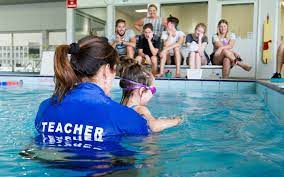Why taking a water safety course might save more than time
Every summer, Australians flock to beaches, pools, and rivers. It’s part of our culture. But despite growing up surrounded by water, too many adults and children still lack basic swimming and survival skills. That’s where a structured water safety course can be life-changing—sometimes, life-saving.
In this article, we explore the importance of water safety training, what to expect, and how long it really takes to become confident in the water.
Why Water Safety Courses Matter—Even If You Think You Can Swim
Many people assume they’re “good enough” in water because they can dog-paddle or float. But knowing how to survive an unexpected fall into a river, how to rescue someone safely, or how to spot rip currents at the beach requires a very different skillset.
In Australia, drowning remains one of the leading causes of accidental death in children under 5—and a major risk for adults who overestimate their abilities. Learning water safety isn’t just about swimming laps; it’s about staying calm under pressure, making quick decisions, and preventing panic.
A good water safety course builds those habits with structured learning and expert instruction. It prepares you not just to survive in the water—but to help others, too.
What’s Actually Covered in a Water Safety Course?
Whether you’re a complete beginner or a parent brushing up on skills before enrolling your child in swimming lessons, most certified courses offer a comprehensive foundation.
Key modules usually include:
- Basic swimming strokes – How to float, kick, and use arms efficiently.
- Survival swimming – Treading water, floating for extended periods, and conserving energy.
- Rescue techniques – Safe ways to help others without putting yourself at risk.
- Recognising hazards – How to spot dangers like rips, strong currents, or submerged objects.
- CPR and emergency response – What to do after pulling someone from the water.
Each course is designed to build confidence and awareness, not just technique.
How Many Months Does It Take to Learn Swimming?
There’s no universal timeline—learning rates vary based on age, fitness level, previous experience, and how often you practise.
That said, for most adults or children starting from scratch, a structured water safety course spread over 8 to 12 weeks is often enough to grasp the essentials. This timeframe allows for weekly lessons and time between sessions to build muscle memory and reinforce skills.
For more advanced skills—like rescue scenarios, endurance swimming, or instructor qualifications—additional training blocks may be required.
Interested in building swimming skills? Explore a trusted water safety course program that supports different ability levels.
Why Group Learning Can Be More Effective Than DIY Practice
Many adults who never learned to swim attempt self-taught approaches—YouTube tutorials, swimming with friends, or the classic “just jump in and figure it out.” These methods often reinforce bad habits or fail to teach critical safety responses.
By contrast, structured classes offer:
- Immediate feedback from qualified instructors.
- Peer motivation that makes progress more enjoyable.
- A safe environment with floatation devices, rescue tools, and shallow-water entry.
- A clear curriculum that builds each week on previously learned skills.
Plus, in many courses, there’s a strong focus on understanding why certain skills matter—like why you shouldn’t enter water to rescue someone without a floatation aid.
If you’re planning to swim regularly—at beaches, pools, lakes, or while travelling—a certified water safety course is a smarter investment than trial and error.
The Ripple Effect: Why Parents, Carers and Educators Should Get Trained Too
Learning water safety isn’t just for kids. Parents and carers often need these skills even more.
Imagine a backyard pool scenario: your child slips in, and you’re the only adult nearby. Panic takes over—unless you’ve been trained. A solid course teaches you how to perform a safe entry, assist without contact, and initiate CPR if necessary.
Educators, camp leaders, and childcare workers are increasingly encouraged—or required—to complete recognised water safety training. It boosts child safety and helps adults stay calm and in control.
💡 Many programs offer flexible schedules to suit work and family commitments. Check for weekend or evening options when choosing a water safety course.
A Lifelong Skill With Real-World Impact
Swimming isn’t just a recreational activity—it’s a survival skill. And like any skill, it improves with time, guidance, and structured practice.
Courses offer more than swimming tips. They build awareness, promote smart risk management, and equip people of all ages with the confidence to act when it counts. Even for competent swimmers, the added emergency response and rescue training can mean the difference between tragedy and quick recovery.
According to Royal Life Saving Australia, 75% of drowning deaths occur in inland waterways and unpatrolled areas—locations where most people wrongly assume they’re safe.
Training prepares you for those exact moments.
Ready to Dive In?
Whether you’re brushing up on safety before a beach trip or teaching your kids to swim with confidence, structured training is the fastest, safest way to get there.
Choose a program that fits your schedule. Book with a certified provider. And don’t just aim to “get by” in the water—aim to master it.
Every strong swimmer starts with a single stroke.
Explore your local options for a certified water safety course and give yourself—and your loved ones—the skills that last a lifetime.

